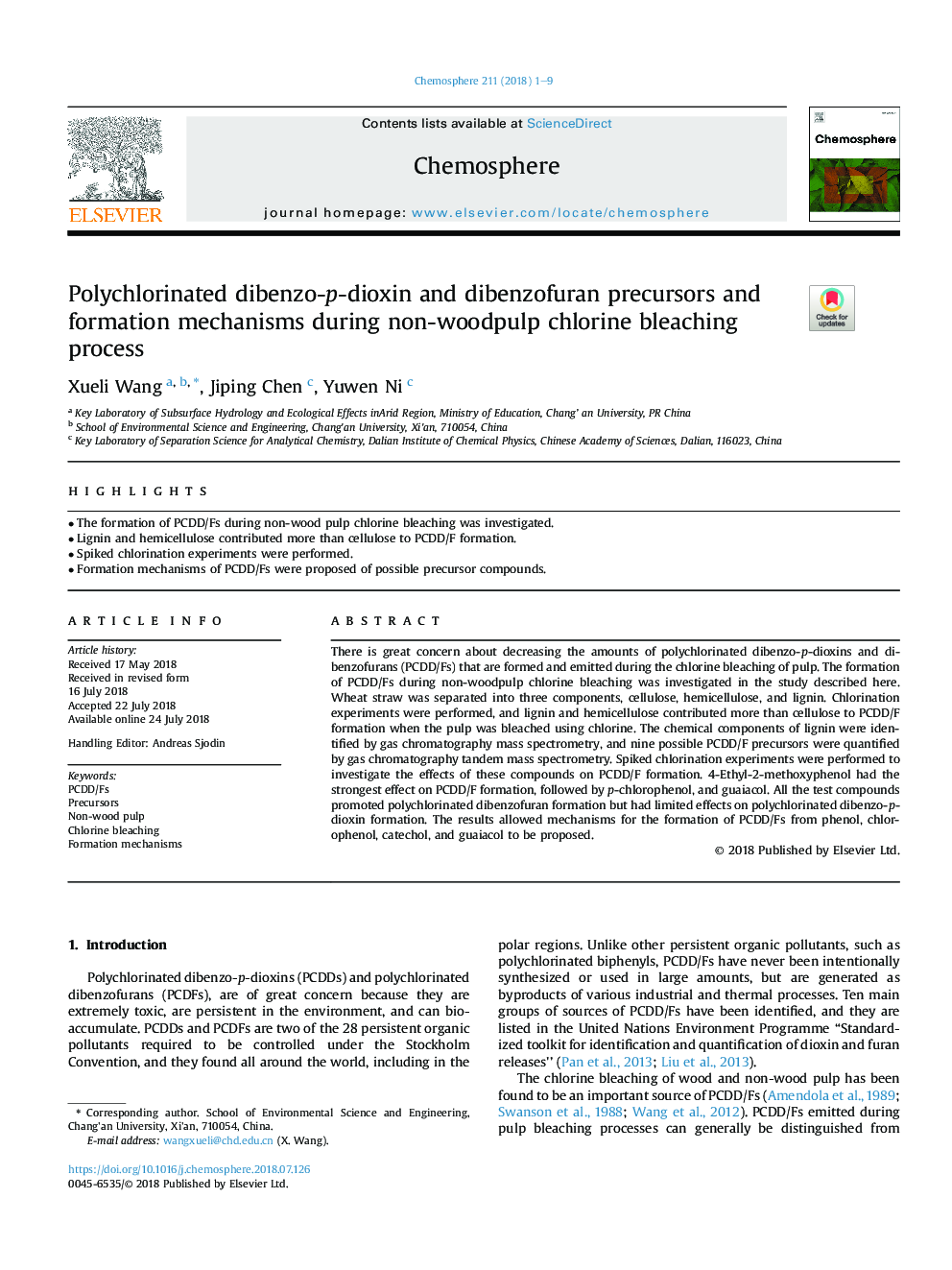| Article ID | Journal | Published Year | Pages | File Type |
|---|---|---|---|---|
| 8850233 | Chemosphere | 2018 | 9 Pages |
Abstract
There is great concern about decreasing the amounts of polychlorinated dibenzo-p-dioxins and dibenzofurans (PCDD/Fs) that are formed and emitted during the chlorine bleaching of pulp. The formation of PCDD/Fs during non-woodpulp chlorine bleaching was investigated in the study described here. Wheat straw was separated into three components, cellulose, hemicellulose, and lignin. Chlorination experiments were performed, and lignin and hemicellulose contributed more than cellulose to PCDD/F formation when the pulp was bleached using chlorine. The chemical components of lignin were identified by gas chromatography mass spectrometry, and nine possible PCDD/F precursors were quantified by gas chromatography tandem mass spectrometry. Spiked chlorination experiments were performed to investigate the effects of these compounds on PCDD/F formation. 4-Ethyl-2-methoxyphenol had the strongest effect on PCDD/F formation, followed by p-chlorophenol, and guaiacol. All the test compounds promoted polychlorinated dibenzofuran formation but had limited effects on polychlorinated dibenzo-p-dioxin formation. The results allowed mechanisms for the formation of PCDD/Fs from phenol, chlorophenol, catechol, and guaiacol to be proposed.
Related Topics
Life Sciences
Environmental Science
Environmental Chemistry
Authors
Xueli Wang, Jiping Chen, Yuwen Ni,
